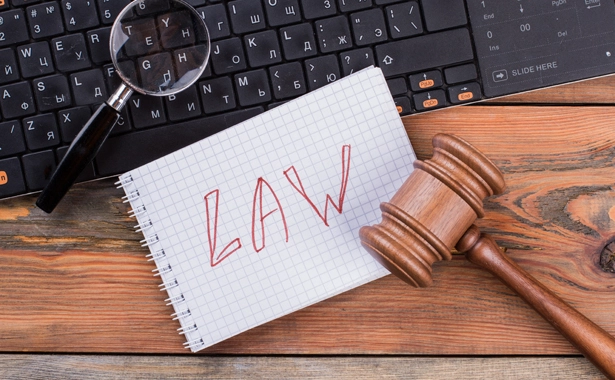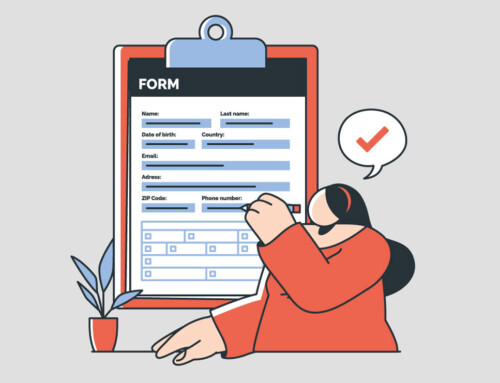Contents
What Is a Motion Hearing?
In the intricate landscape of legal proceedings, a motion hearing serves as a pivotal juncture where specific issues are addressed and resolved before a trial commences. A motion hearing is a formal session in which the parties involved in a case present their legal arguments before a judge, aiming to settle particular matters that could influence the course of the trial. These hearings are crucial for tackling a variety of issues such as requests to dismiss certain claims, compel the production of evidence, or exclude particular testimony or evidence from being presented during the trial. During a motion hearing, both the plaintiff and the defendant have the opportunity to present their arguments. The judge may engage with both parties by asking questions and seeking clarifications to ensure a comprehensive understanding of the issues at hand. Ultimately, the judge will make a ruling on the motion, which can significantly shape the trajectory of the litigation process. Whether the outcome results in the dismissal of certain claims or the inclusion or exclusion of critical evidence, the decisions made during a motion hearing can streamline the trial, potentially save time and resources, and sometimes even lead to the early resolution of the case. Understanding the function and importance of motion hearings is essential for anyone navigating the legal system, as these hearings can have a profound impact on the strategies employed and the overall direction of a case.
How to Prepare for a Motion Hearing?
Preparing for a motion hearing requires careful planning and attention to detail. Here are the key steps to ensure you are well-prepared:
- Understand the Motion: Familiarize yourself with the specific motion being heard. Read the motion, responses, and any replies thoroughly.
- Review Relevant Laws and Rules: Research and review the relevant statutes, case law, and procedural rules that apply to the motion. Ensure you understand the legal standards the judge will use to decide the motion.
- Gather and Organize Evidence: Collect and organize all necessary evidence, such as documents, affidavits, or deposition transcripts. Make sure everything is properly labeled and easy to access.
- Prepare Your Arguments: Develop clear and concise arguments supporting your position. Anticipate the opposing party’s arguments and prepare counterarguments.
- Draft a Brief: If required, draft and file a written brief outlining your arguments, supported by relevant legal authorities. Ensure the brief is filed within the deadline set by the court.
- Practice Oral Presentation: Practice your oral arguments, focusing on clarity and brevity. Rehearse with colleagues or in front of a mirror to build confidence.
- Prepare for Questions: Be ready to answer questions from the judge. Think about potential questions the judge might ask and prepare your responses.
- Organize Your Materials: Ensure all your materials, including notes, evidence, and legal authorities, are well-organized and easily accessible during the hearing.
- Review Court Procedures: Familiarize yourself with the court’s procedures, including the format of the hearing and any specific requirements of the judge or court.
- Arrive Early: Plan to arrive at the courthouse early to allow time for unexpected delays and to find the correct courtroom.
- Professional Attire and Conduct: Dress professionally and conduct yourself with respect and professionalism at all times.
Motion Hearing vs Trial
Here are the key differences between a motion hearing and a trial:
Purpose: A motion hearing is held to resolve specific legal or procedural issues before the trial. In contrast, a trial is conducted to resolve the entire case by determining the facts and applying the law to reach a final decision.
Scope: A motion hearing focuses on particular issues such as dismissing a case, compelling discovery, or excluding evidence. On the other hand, a trial covers the entire case, including all factual and legal disputes.
Participants: A motion hearing typically involves only the judge and attorneys for both parties. In a trial, the participants include the judge, attorneys, witnesses, and possibly a jury.
Format: Motion hearings primarily involve legal arguments based on written briefs and oral presentations and rarely involve witness testimony. Trials, however, involve a comprehensive presentation of evidence, witness testimony, cross-examination, and jury deliberation (if a jury is present).
Duration: Motion hearings are generally brief, often lasting a few hours to a day. Trials can be lengthy, lasting several days, weeks, or even months.
Focus: A motion hearing centers on resolving procedural or legal points based on relevant laws and rules. A trial focuses on determining the facts of the case and applying the law to those facts to reach a verdict.
Outcome: A motion hearing results in a ruling on the specific issue raised in the motion, which can affect the course of the case but does not resolve the entire case. In contrast, a trial results in a final decision or verdict on the merits of the case, resolving all primary disputes.
Impact: Motion hearings can streamline the trial process by resolving certain issues beforehand, potentially leading to dismissal or settlement. Trials provide a comprehensive resolution to the case, determining the rights and liabilities of the parties involved.
These distinctions help clarify the different roles and expectations for each stage in the legal process.
What Happens at a Motion Hearing?
A motion hearing is a critical event in the legal process where specific legal or procedural issues are addressed before the actual trial. Here is what typically happens at a motion hearing:
Introduction and Preliminary Matters
The judge opens the hearing by stating the case name and the motion to be heard. They may ask for the identification of parties present, including attorneys representing the plaintiff and defendant.
Presentation of the Motion
The attorney who filed the motion (movant) presents their argument first. This includes stating the legal basis for the motion, summarizing the relevant facts, and citing legal precedents or statutes that support their position. The movant may submit affidavits, documents, or other evidence supporting the motion. However, live witness testimony is rare.
Opposition’s Response
The opposing party (respondent) then presents their counterarguments. They explain why the motion should be denied, addressing the points raised by the movant. The respondent may also submit their evidence, such as affidavits and documents, to refute the movant’s claims.
Judge’s Questions and Clarifications
The judge may ask questions to either party for clarification on specific points. This is to ensure the judge fully understands the arguments and evidence presented.
Rebuttal and Additional Arguments
The movant may be given a brief opportunity to respond to the respondent’s arguments and evidence. Both parties may make final statements summarizing their positions.
Legal Arguments
Both parties’ attorneys will make oral arguments, focusing on the legal issues at hand. This is a crucial part of the hearing, where attorneys try to persuade the judge based on legal principles and case law.
Judge’s Decision
In some cases, the judge may issue an immediate ruling from the bench, granting or denying the motion based on the arguments and evidence presented. Alternatively, the judge may take the matter under advisement, indicating that a written decision will be issued at a later date.
Impact of the Decision
The judge’s ruling on the motion can significantly impact the course of the case. For example, granting a motion to dismiss can end the case, while denying a motion for summary judgment means the case will proceed to trial. Depending on the ruling, the parties may need to take further actions, such as continuing with discovery, preparing for trial, or, in some cases, appealing the decision.
Motion hearings are integral to the pre-trial process, allowing certain issues to be resolved, which can streamline the trial or potentially avoid it altogether.
What Are the Consequences of a Denied Motion?
When a motion is denied in a legal context, it can have several significant consequences for the parties involved. A motion is a formal request made to a court, and its denial can impact the course of the litigation in various ways. Here are some key consequences of a denied motion:
Delay in Proceedings: Denial of a motion, especially if it was seeking to dismiss the case or to obtain summary judgment, can result in the continuation of the litigation process. This means that the case will proceed to further stages, such as discovery, pre-trial conferences, and potentially trial, leading to additional time and resources being expended.
Increased Costs: The continuation of the case often leads to increased legal costs for both parties. These costs can include attorney fees, costs related to gathering and presenting evidence, and other litigation expenses. Denial of a motion that could have resolved the case early may significantly increase the financial burden on the parties.
Strategic Adjustments: Parties may need to adjust their legal strategies in response to a denied motion. For example, if a motion to exclude certain evidence is denied, the party opposing the evidence will need to find alternative ways to challenge its credibility or relevance during trial.
Impact on Settlement Negotiations: The denial of a motion can influence settlement negotiations. For instance, if a defendant’s motion for summary judgment is denied, the plaintiff may feel emboldened and less likely to settle for a lower amount. Conversely, the defendant may become more inclined to settle to avoid the risks and costs of a trial.
Precedent and Legal Implications: The court’s decision to deny a motion can set a legal precedent, particularly if the ruling is published and becomes part of the case law. This can affect how similar motions are decided in future cases and can have broader implications for legal practice and interpretation of the law.
Moral and Psychological Impact: The denial of a motion can have moral and psychological effects on the parties involved. For example, a denied motion to dismiss may boost the morale of the plaintiff, while potentially discouraging the defendant. It can also impact the perception of the strength of the case on both sides.
Potential for Appeal: Depending on the type of motion and the stage of the case, the denial may provide grounds for an immediate appeal. Interlocutory appeals, although less common, may be permitted in certain circumstances. If the denial is seen as significantly prejudicial, the party may seek appellate review, which can further delay the resolution of the case.
In essence, the denial of a motion can have far-reaching consequences, affecting the duration, cost, strategy, settlement prospects, legal precedent, and the psychological state of the parties. Understanding these potential outcomes is crucial for legal practitioners and their clients as they navigate the complexities of litigation.
Common Motions in Legal Proceedings
Legal proceedings often involve various motions, each serving a specific purpose within the litigation process. Understanding these motions is crucial for anyone involved in or studying law.
Motion to Dismiss is used to request the court to dismiss a case due to a lack of legal basis or jurisdiction. This motion is typically filed at the beginning of a lawsuit, aiming to terminate the case before it proceeds further.
Motion for Summary Judgment asks the court to decide the case or a specific issue within the case without a trial, based on the evidence presented in the pleadings. This motion is used after the discovery phase but before the trial, when one party believes there is no dispute over the material facts.
Motion for Default Judgment seeks a judgment in favor of the plaintiff when the defendant fails to respond to the complaint. It is used when the defendant does not respond within the stipulated time, allowing the plaintiff to win the case by default.
Motion to Compel is filed to ask the court to order a party to comply with a discovery request. This motion is common during the discovery phase when one party is not providing the requested information, ensuring that both sides have access to the necessary evidence.
Motion for a New Trial requests a new trial due to significant errors or issues that occurred during the original trial. This motion is filed after a trial has concluded, typically within a short period following the verdict, to rectify any injustices that may have impacted the trial’s outcome.
Motion in Limine is used to request that certain evidence be deemed inadmissible and excluded from the trial. It is often filed before or during the trial, usually during pretrial conferences, to prevent prejudicial or irrelevant evidence from being presented to the jury.
Motion for Judgment as a Matter of Law (JMOL) asks the court to rule in favor of one party because the opposing party has insufficient evidence. This motion can be filed during or after a jury trial but before the jury deliberates, aiming to resolve the case without a jury decision.
Motion to Strike requests the removal of improper material from the court record. This motion can be filed at any point during the litigation, often in response to offensive or irrelevant content in the pleadings, ensuring the case proceeds based on appropriate information.
Motion for Protective Order aims to limit the scope or method of discovery to protect a party from harassment or undue burden. This motion is used during the discovery phase to prevent abusive or excessively burdensome discovery practices.
Motion to Amend Pleadings requests permission to change or add to the original pleadings. This motion is usually filed during the early stages of litigation, before trial, to ensure that all relevant issues and claims are properly presented to the court.
These motions are fundamental tools in the litigation process, allowing parties to seek various forms of relief and ensure that legal proceedings are conducted fairly and efficiently. Understanding when and how to use these motions can significantly impact the outcome of a case.
Disclaimer: The content provided on this blog is for informational purposes only and does not constitute legal, financial, or professional advice.







